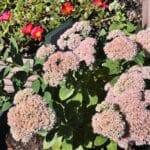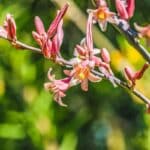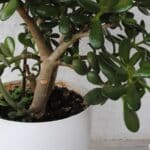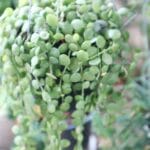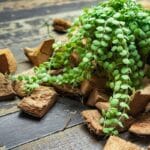Most colored succulents do not occur naturally. They are diligent but sometimes accidental results of various cultivation and breeding practices and usually take years to achieve. These succulents are not just visually appealing but are also tough plants since they are the result of combining the desirable traits of their parent plants.
One colored succulent hybrid that has made a name as a houseplant is Echeveria ‘Black Prince’ which first appeared in the early 70s. This successful succulent continues to amaze today with its prolific growth and stunning dark leaves and patterns.
Here are interesting facts about this charming Echeveria as well as some tips to grow them at home.
What is ‘Black Prince’?
Echeveria ‘Black Prince’ is a member of the Crassulaceae or Stonecrop family. Developed in California by Frank Reinelt, it is the result of crossing two distinct succulents originating from Mexico (1).
This hybrid was created by pollinating E. shaviana (Mexican Hens) from which it got its delicate leaves with E. affinis (Black Echeveria) which is the source of its unique black color.
It is a rosette-forming succulent that grows a compact pattern of thin but fleshy triangular dark leaves. These leaves start green and age to a deep burgundy brown, too dark it is almost black. The lower leaves are wider and develop yellow edges over time (2).
‘Black Prince’ is a slow-growing perennial but it can grow up to 1ft (30 cm) high, especially when planted on the ground. Upon maturity, it produces long-lasting short fleshy stalks of small deep red flowers usually in autumn to early winter as well as flower-like offset clusters (3).
Landscape and Horticultural Uses
E. ‘Black Prince’ makes an excellent potted plant that can be grown indoors. Because of the striking contrast, it is often planted in dish gardens with light-colored and green succulents like Aeonium and Peperomia (4).
This succulent is also a good groundcover or accent in the garden, especially where there is full sunlight. Because it is an evergreen drought tolerant plant, it provides color and life in the garden throughout the year and works very well in the rockery garden (5).
‘Black Prince’ is also used in modern bouquet arrangements in which live plants are used. The flower-like and dark foliage provides an elegant and unique appeal making it popular among clients looking for novelty.
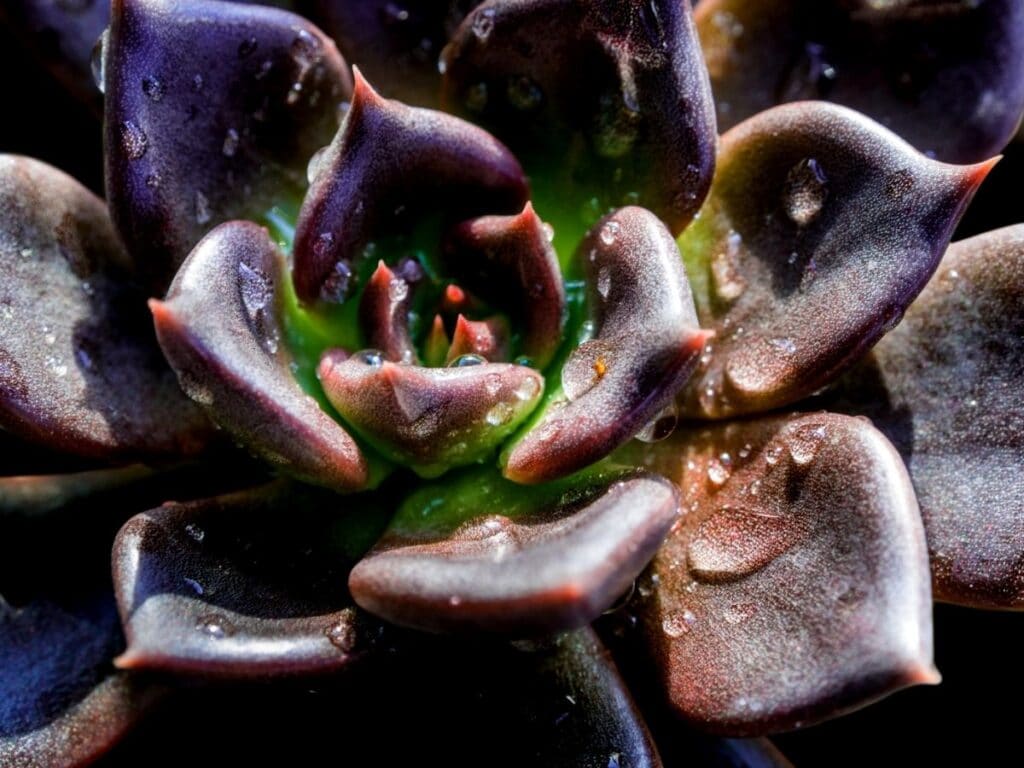
Echeveria ‘Black Prince’ Care Tips
Growth Requirement
Echeverias are typical succulents requiring full sun to thrive. ‘Black Prince’ can tolerate partial shade but needs a good exposure to sunlight to achieve its deep foliage color (2).
A well-draining soil made of 60-70% mineral material and 40-30% organic material is ideal for this plant since the root system needs anchorage but at the same time drainage and aeration.
It has low water requirements and is extremely drought-tolerant so irrigation is occasional. During spring to summer, infrequent but regular watering is needed just to keep the soil moist and retain the turgid nature of the leaves.
‘Black Prince’ is winter hardy up to 25°F (-4°C). It is best to keep a potted plant indoors where temperatures can be regulated. Refrain from watering during winter, sparingly if need be, particularly those planted fixed outdoors (1).
Propagation and Maintenance
Like most hybrids, this succulent will not come true from seed so the most common form of propagation is vegetatively. Usually from the offsets and the leaves (3).
Although ‘Black Prince’ is slow-growing, it is fairly easy to root. Growers often just leave leaf cuttings on top of a porous and moist growing medium and then roots start forming after a week.
Succulents like Echeveria produce stunning blooms which can exhaust the plant resulting in spindly growth. Although the bright flowers make the plant look even more attractive, pruning the flower stalks is a good way to keep the energy reserves of the plant to maintain its compact form and produce offsets too. Nothing goes to waste as leaves from the stalk can still develop new plants as well.
The dark leaves of ‘Black Prince’ show water spots so to avoid this in plants grown in containers indoors, use mineral-free or distilled water when irrigating. Or gently clean the leaves with a piece of dry cloth (4).
FAQs
See more Echeveria types and other succulent plants you can grow.
*photo by Satakorn.s/depositphotos
References
Reference list
(1) Bagnasco, J. and Reidmuller, B. Success with Succulents. Cool Springs Press. 2017. P. 192.
(2) Agrilife Extension. Echeveria ‘Black Prince’. Texas A&M University System. 2020. P.17.
(3) Plants Database. Echeveria ‘Black Prince’. The National Gardening Association. 2020.
(4) Baldwin, D. Succulents Container Garden. Timber Press. 2010. P. 248.
(5) Flora and Fauna Web. Echeveria ‘Black Prince’. National Parks Board. 2020. https://www.nparks.gov.sg/florafaunaweb/flora/7/3/7346.
Close

